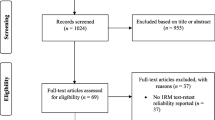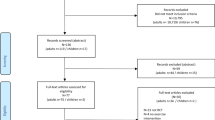Abstract
Clinical neck pain is associated with impairment of muscle performance, assessable at a functional level. Functional deficiencies reflect altered mechanisms of muscle control and changed muscle properties. The basic physiologic mechanisms of pain have been extensively investigated, and the functional impairments associated with neck pain are well documented. However, the cause-effect relationships between neck pain and motor control are poorly understood, due to difficulty translating basic physiologic findings into the complex scenario of clinical pain conditions. This article reviews current evidence of disturbances in neural control and muscle properties associated with neck pain and discusses their interrelationships. Although the links among pain, motor control, and muscle properties have been established, their relative significance for the perpetuation and recurrence of neck pain remains largely unexplored. Rehabilitation programs that include interventions for neuromuscular changes seem beneficial for restoring motor function and may prove effective for reducing neck pain recurrence.
Similar content being viewed by others
References and Recommended Reading
Fejer R, Kyvik KO, Hartvigsen J: The prevalence of neck pain in the world population: a systematic critical review of the literature. Eur Spine J 2006, 15:834–848.
Borghouts AJ, Koes BW, Bouter LM: The clinical course and prognostic factors of non-specific neck pain: a systematic review. Pain 1998, 77:1–13.
Silverman JL, Rodriquez AA, Agre JC: Quantitative cervical flexor strength in healthy subjects and in subjects with mechanical neck pain. Arch Phys Med Rehabil 1991, 72:679–681.
Barton PM, Hayes KC: Neck flexor muscle strength, efficiency, and relaxation times in normal subjects and subjects with unilateral neck pain and headache. Arch Phys Med Rehabil 1996, 77:680–687.
Watson DH, Trott PH: Cervical headache: an investigation of natural head posture and upper cervical flexor muscle performance. Cephalalgia 1993, 13:272–284.
Vernon HT, Aker P, Aramenko M, et al.: Evaluation of neck muscle strength with a modified sphygmomanometer dynamometer: reliability and validity. J Manipulative Physiol Ther 1992, 15:343–349.
O’Leary S, Jull G, Kim M, Vicenzino B: Cranio-cervical flexor muscle impairment at maximal, moderate, and low loads is a feature of neck pain. Man Ther 2007, 12:34–39.
Falla D, Jull G, Hodges PW: Feedforward activity of the cervical flexor muscles during voluntary arm movements is delayed in chronic neck pain. Exp Brain Res 2004, 157:43–48.
Falla D, Jull G, Hodges PW: Patients with neck pain demonstrate reduced electromyographic activity of the deep cervical flexor muscles during performance of the craniocervical flexion test. Spine 2004, 29:2108–2114.
Falla D, Bilenkij G, Jull G: Patients with chronic neck pain demonstrate altered patterns of muscle activation during performance of a functional upper limb task. Spine 2004, 29:1436–1440.
Jull G, Kristjansson E, Dall’Alba P: Impairment in the cervical flexors: a comparison of whiplash and insidious onset neck pain patients. Man Ther 2004, 9:89–94.
Veiersted KB, Westgaard RH, Andersen P: Pattern of muscle activity during stereotyped work and its relation to muscle pain. Int Arch Occup Environ Health 1990, 62:31–41.
Falla D, Rainoldi A, Merletti R, Jull G: Myoelectric manifestations of sternocleidomastoid and anterior scalene muscle fatigue in chronic neck pain patients. Clin Neurophysiol 2003, 114:488–495.
Gogia PP, Sabbahi MA: Electromyographic analysis of neck muscle fatigue in patients with osteoarthritis of the cervical spine. Spine 1994, 19:502–506.
Falla D, Jull G, Rainoldi A, Merletti R: Neck flexor muscle fatigue is side specific in patients with unilateral neck pain. Eur J Pain 2004, 8:71–77.
Falla D, Farina D: Muscle fiber conduction velocity of the upper trapezius muscle during dynamic contraction of the upper limb in patients with chronic neck pain. Pain 2005, 116:138–145.
Revel M, Andre Deshays C, Minguet M: Cervicocephalic kinesthetic sensibility in patients with cervical pain. Arch Phys Med Rehabil 1991, 72:288–291.
Heikkila H, Astrom P: Cervicocephlic kinesthetic sensibility in patients with whiplash injury. Scand J Rehabil Med 1996, 28:133–138.
Kristjansson E, Dall’Alba P, Jull G: A study of five cervicocephalic relocation tests in three different subject groups. Clin Rehabil 2003, 17:768–774.
Treleaven J, Jull G, LowChoy N: The relationship of cervical joint position error to balance and eye movement disturbances in persistent whiplash. Man Ther 2006, 11:99–106.
Feipel V, Salvia P, Klein H, Rooze M: Head repositioning accuracy in patients with whiplash-associated disorders. Spine 2006, 31:E51–58.
Sterling M, Jull G, Vicenzino B, et al.: Development of motor dysfunction following whiplash injury. Pain 2003, 103:65–73.
Treleaven J, Jull G, Sterling M: Dizziness and unsteadiness following whiplash injury: characteristic features and relationship with cervical joint position error. J Rehabil Med 2003, 35:36–43.
Falla D, Jull G, Edwards S, et al.: Neuromuscular efficiency of the sternocleidomastoid and anterior scalene muscles in patients with chronic neck pain. Disabil Rehabil 2004, 26:712–717.
Jull G, Barrett C, Magee R, Ho P: Further clinical clarification of the muscle dysfunction in cervical headache. Cephalalgia 1999, 19:179–185.
Chiu TT, Law E, Chiu TH: Performance of the craniocervical flexion test in subjects with and without chronic neck pain. J Orthop Sports Phys Ther 2005, 35:567–571.
Descarreaux M, Mayrand N, Raymond J: Neuromuscular control of the head in an isometric force reproduction task: comparison of whiplash subjects and health controls. Spine J 2006, Epub ahead of print.
Szeto GP, Straker LM, O’sullivan PB: A comparison of symptomatic and asymptomatic office workers performing monotonous keyboard work 1: Neck and shoulder muscle recruitment patterns. Man Ther 2005, 10:270–280.
Nederhand MJ, Ijzerman MJ, Hermens HJ, et al.: Cervical muscle dysfunction in the chronic whiplash associated disorder grade II (WAD-II). Spine 2000, 25:1938–1943.
Nederhand MJ, Hermens H, Ijzerman MJ, et al.: Cervical muscle dysfunction in the chronic whiplash associated disorder grade 2: the relevance of the trauma. Spine 2002, 27:1056–1061.
Hagg GM, Anstrom A: Load pattern and pressure pain threshold in the upper trapezius muscle and psychosocial factors in medical secretaries with and without shoulder/neck disorders. Int Arch Occup Environ Health 1997, 69:423–432.
Fredin Y, Elert J, Britschgi N, et al.: A decreased ability to relax between repetitive muscle contractions in patients with chronic symptoms after whiplash trauma of the neck. J Musculoskel Pain 1997, 5:55–70.
Lee HY, Wang JD, Yao G, Wang SF: Association between cervicocephalic kinesthetic sensibility and frequency of subclinical neck pain. Man Ther 2007, Epub ahead of print.
Falla D, Farina D: Neuromuscular adaptation in experimental and clinical neck pain. J Electromyogr Kinesiol 2006, Epub ahead of print.
Passatore M, Roatta S: Influence of sympathetic nervous system on sensorimotor function: whiplash associated disorders (WAD) as a model. Eur J Appl Physiol 2006, 98:423–449.
Falla D, Farina D, Graven-Nielsen T: Experimental muscle pain results in reorganization of coordination among trapezius muscle subdivisions during repetitive shoulder flexion. Exp Brain Res 2007, 178:385–393.
Falla D, Farina D, Kanstrup Dahl M, Graven-Nielsen T: Muscle pain induces task-dependent changes in cervical agonist/antagonist activity. J Appl Physiol 2007, 102:601–609.
Farina D, Arendt-Nielsen L, Merletti R, Graven-Nielsen T: Effect of experimental muscle pain on motor unit firing rate and conduction velocity. J Neurophysiol 2004, 91:1250–1259.
Sohn MK, Graven-Nielsen T, Arendt-Nielsen L, Svensson P: Inhibition of motor unit firing during experimental muscle pain in humans. Muscle Nerve 2000, 23:1219–1226.
de Zee M, Falla D, Farina D, Rasmussen J: Prediction of neuromuscular adaptation of experimentally induced neck pain using a musculoskeletal model. Presented at the XIth International Symposium on Computer Simulation in Biomechanics 2007. Tainan, Taiwan; June 28–30, 2007.
Madeleine P, Leclerc F, Arendt-Nielsen L, et al.: Experimental muscle pain changes the spatial distribution of upper trapezius muscle activity during sustained contraction. Clin Neurophysiol 2006, 117:2436–2445.
Panjabi MM: The stabilizing system of the spine. Part II. Neutral zone and instability hypothesis. J Spinal Disord 1992, 5:390–396.
Panjabi MM: The stabilizing system of the spine. Part I. Function, dysfunction, adaptation, and enhancement. J Spinal Disord 1992, 5:383–389.
Ariens GA, Bongers PM, Hoodgendoorn WE, et al.: High physical and psychosocial load at work and sickness absence due to neck pain. Scand J Work Environ Health 2002, 28:222–231.
Ariens GA, Bongers PM, Douwes M, et al.: Are neck flexion, neck rotation, and sitting at work risk factors for neck pain? Results of a prospective cohort study. Occup Environ Med 2001, 58:200–207.
Ariens GA, van Mechelen W, Bongers PM, et al.: Physical risk factors for neck pain. Scand J Work Environ Health 2000, 26:7–19.
Rosendal L, Larsson B, Kristiansen J, et al.: Increase in muscle nociceptive substances and anaerobic metabolism in patients with trapezius myalgia: microdialysis in rest and during exercise. Pain 2004, 112:324–334.
Gerdle B, Lemming D, Kristiansen J, et al.: Biochemical alterations in the trapezius muscle of patients with chronic whiplash associated disorders (WAD)—A microdialysis study. Eur J Pain 2007, Epub ahead of print.
Larsson SE, Bengtsson A, Bodegard L, et al.: Muscle changes in work-related chronic myalgia. Acta Orthop Scand 1998, 59:552–556.
Larsson B, Bjork J, Kadi F, et al.: Blood supply and oxidative metabolism in muscle biopsies of female cleaners with and without myalgia. Clin J Pain 2004, 20:440–446.
Larsson R, Cai H, Zhang Q, et al.: Visualization of chronic neck-shoulder pain: Impaired microcirculation in the upper trapezius muscle in chronic cervico-brachial pain. Occup Med (London) 1998, 48:189–194.
Uhlig Y, Weber BR, Grob D, Muntener M: Fiber composition and fiber transformations in neck muscles of patients with dysfunction of the cervical spine. J Orthop Res 1995, 13:240–249.
Hallgren RC, Greenman PE, Rechtien JJ: Atrophy of suboccipital muscles in patients with chronic pain: a pilot study. J Am Osteopath Assoc 1994, 94:1032–1038.
McPartland JM, Brodeur RR, Hallgren RC: Chronic neck pain, standing balance, and suboccipital muscle atrophy—a pilot study. J Manipulative Physiol Ther 1997, 20:24–29.
Elliott J, Jull G, Noteboom JT, et al.: Fatty infiltration in the cervical extensor muscles in persistent whiplash-associated disorders: a magnetic resonance imaging analysis. Spine 2006, 31:847–855.
Jull G, Amiri M, Bullock-Saxton J, et al.: Cervical musculoskeletal impairment in frequent intermittent headache. Part 1: Subjects with single headaches. Cephalalgia 2007, 27:793–802.
Janig W: Systemic and specific autonomic reactions in pain: efferent, afferent and endocrine components. Eur J Anaesthesiol 1985, 2:319–346.
Robertson D, Johnson GA, Robertson RM, et al.: Comparative assessment of stimuli that release neuronal and adrenomedullary catecholamines in man. Circulation 1979, 59:637–643.
Greisen J, Grofte T, Hansen PO, et al.: Acute non-traumatic pain increases the hepatic amino-to urea-N conversion in normal man. J Hepatol 1999, 31:647–655.
Bowman WC: Prejunctional and postjunctional cholinoceptors at the neuromuscular junction. Anesth Analg 1980, 59:935–943.
Roatta S, Arendt-Nielsen L, Cescon C, Farina D: Sympathetic modulation by cold pressor test alters the spike-triggered average torque and discharge rate of low-threshold motor units. Presented at Neuroscience 2007. San Diego; November 3–7, 2007.
Lacy CR, Contrada RJ, Robbins ML, et al.: Coronary vasoconstriction induced by mental stress (simulated public speaking). Am J Cardiol 1995, 75:503–505.
Hagg GM: Static work loads and occupational myalgia-a new explanation model. 1991, 141–143.
Falla D, Jull G, Hodges P, Vicenzino B: An endurance-strength training regime is effective in reducing myoelectric manifestations of cervical flexor muscle fatigue in females with chronic neck pain. Clin Neurophysiol 2006, 117:828–837.
Jull G, Falla D, Hodges P, Vicenzino B: Cervical flexor muscle retraining: physiological mechanisms of efficacy 2005. Presented at the 2nd International Conference on Movement Dysfunction. Edinburgh, Scotland; September 23–25, 2005.
Falla D, Jull G, Russell T, et al.: Effect of neck exercise on sitting posture in patients with chronic neck pain. Phys Ther 2007, 87:408–417.
Falla D, Jull G, Hodges P: Training the cervical muscles with prescribed motor tasks does not change muscle activation during a functional activity. Man Ther 2007, Epub ahead of print.
Jull G, Trott P, Potter H, et al.: A randomized controlled trial of exercise and manipulative therapy for cervicogenic headache. Spine 2002, 27:1835–1843.
Gross AR, Hoving JL, Haines TA, et al.: A Cochrane review of manipulation and mobilization for mechanical neck disorders. Spine 2004, 29:1541–1548.
Gore DR, Sepic SB, Gardner GM, Murray MP: Neck pain: A long term follow-up of 205 patients. Spine 1987, 12:1–5.
Author information
Authors and Affiliations
Corresponding author
Rights and permissions
About this article
Cite this article
Falla, D., Farina, D. Neural and muscular factors associated with motor impairment in neck pain. Curr Rheumatol Rep 9, 497–502 (2007). https://doi.org/10.1007/s11926-007-0080-4
Published:
Issue Date:
DOI: https://doi.org/10.1007/s11926-007-0080-4




